Menu
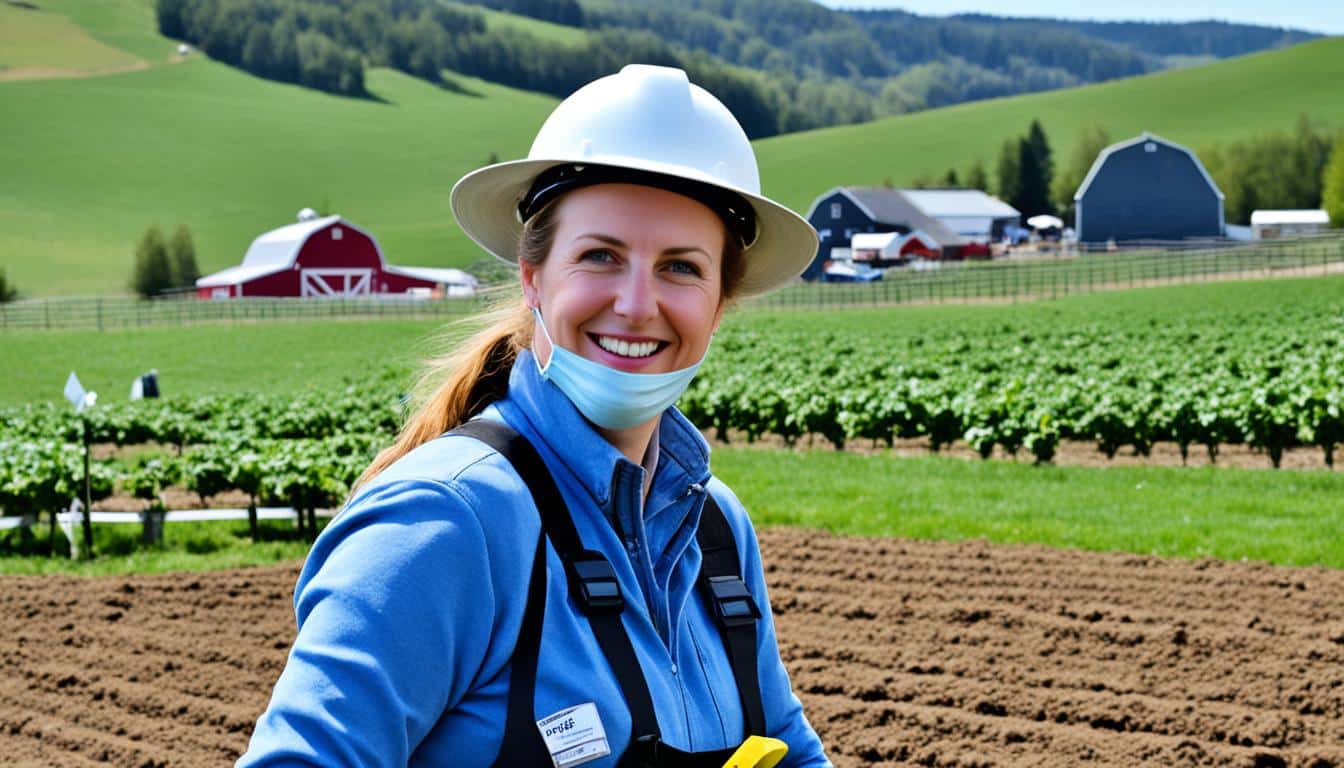
Implementing physical barriers can slash accident risks on farms by 50%. This fact shows how crucial safety measures are in agritourism. Alan and Annie Trienen’s pumpkin patch grew from the 1990s to over 12 acres today. As their place got busier, they had to make it safer. Rural Mutual Insurance helped them meet safety standards while keeping things fun and safe.
Keeping visitors safe on farms means following safety rules to the letter. Safety is not just about rules; it’s about caring for people who come to enjoy farm life. The focus should always be on preventing risks to ensure everyone has a good time.
Keeping visitors safe on farms is very important. This is especially true for places mixing farming with tourism. Farms are full of risks like big machines, animals, and rough ground. Understanding these dangers is a big part of making sure guests are safe. By spotting and managing these risks, farms can make sure visitors have a fun but secure time.
Prior to opening to the public, farms should carefully look for hazards. They should focus on areas with machines, animals, or tough ground. It’s also key to tell visitors what to wear and the best shoes to keep safe. Guided tours, run by informed staff, can also improve safety. They provide important safety tips and educational bits.
If farm safety steps are skipped, accidents and legal trouble may follow. It’s vital to regularly check play areas and have safety rules for animal encounters. Also, making sure there are places to wash hands and following food safety laws helps keep everyone safe. Farms should also have a plan for emergencies and practice it. This all shows the farm and its visitors’ safety is top priority.
It’s crucial to do a detailed risk assessment for farm visitors. This helps make sure rural areas are safe. Kristin Brassard, a Marketing & Agritourism Specialist, says this check is key before farms welcome the public.
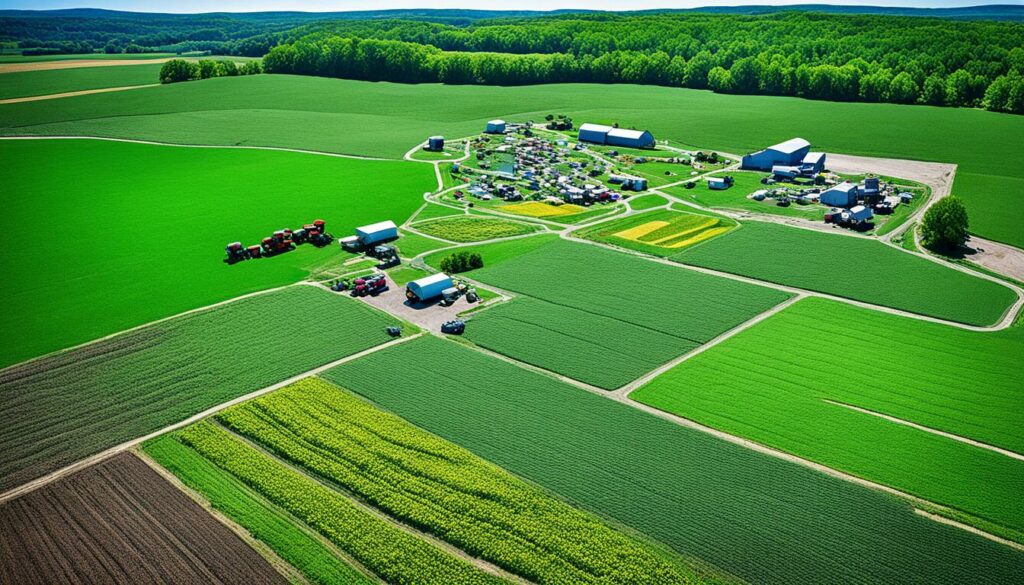
We check places like rough land, machinery areas, and where animals are. We look at how to lower risks, including:
After spotting these dangers, we need a solid safety plan. It must have steps to stop accidents, what to do in emergencies, and where to get help. This ensures safety all year round.
| Safety Measure | Description |
|---|---|
| Emergency Response Plan | Work with the local community to handle sudden issues well. |
| Onsite Vehicles | Use clear signs and barriers, mirrors, and speed limits to keep people away from risks. |
| Disease Risk Management | Let people play with animals safely, wash hands, and keep the place clean to stop illnesses. |
| Training & Accreditation | Give your team courses and training, like CEVAS, to keep everyone safe. |
Using a detailed checklist from the Access to Farms Partnership and NFU is smart. It ensures nothing’s missed in the safety inspection. Following these steps will protect both visitors and the farm, making the visit better.
Agritourism farms have their own special appeal. However, they come with unique dangers too. Animals and machines add to the farm adventure, but they can be quite risky. It’s vital for farm owners to make sure visitors are safe by using *agricultural safety measures*. This way, everyone can enjoy the farm without getting hurt.
Barriers and fences play a big role in keeping visitors safe. It’s important to clearly mark areas that are off-limits. Safe, strong fencing is better than barbed wire, which can hurt people. Always check and fix the barriers to keep everyone safe from harm.
Signs are also key for keeping visitors safe. They warn about potential dangers, especially for kids. It’s crucial to have visible signs where machines operate, such as around tractors. Make sure to keep the signs up-to-date and in good shape to protect everyone. This supports ongoing *visitor protection measures*.
Following these *agricultural safety measures* protects visitors and reduces legal risks. Every farm has its own dangers, so safety plans need to fit those specific risks. Keeping visitors away from dangerous machines and animals is a big job. But, it greatly improves the farm’s safety for everyone.
It’s crucial to have a strong emergency response plan for your farm. This keeps everyone safe and helps manage risks. Several important steps must be taken. These ensure the safety of both guests and workers when unexpected events happen.
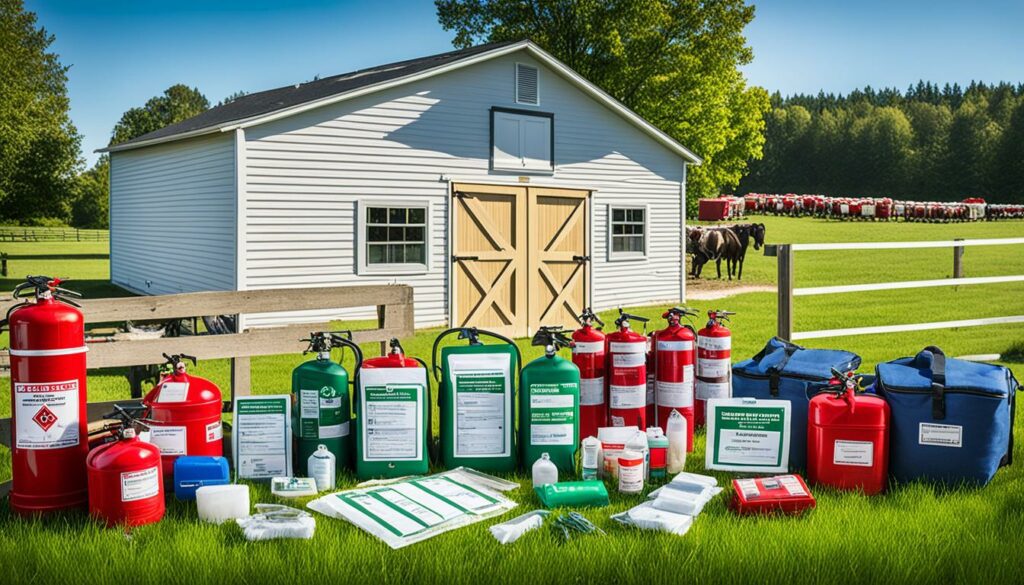
Every farm must have an in-depth emergency plan. This includes a farm map, a full inventory list, and emergency contact numbers. It’s vital to regularly check and maintain all parts of the farm, like buildings and equipment. Make sure there are safe areas for farm items.
Roles and duties in the disaster plan must be clear. This prevents confusion in a crisis.
Disasters can be natural (like tornadoes or wildfires) or made by humans (like chemical spills). So, it’s key to train staff on disaster drills and first aid. This ensures they’re ready to act fast. Make sure to keep a current emergency contact list for staff.
Good communication is at the heart of agritourism safety. Post emergency signs where everyone can see them. Give out safety instructions, especially during fun events like hayrides. Tours led by knowledgeable staff add to safety. They teach visitors what to do in an emergency and where to find help.
Doing regular safety drills with the farm team and local responders is important. This helps prevent damage and keep everyone safe. Websites like safeagritourism.org can help a lot. They have checklists and templates for emergency plans.
Just as important are the hygiene stations after animal contact and before eating. And safety signs where people gather help remind everyone of the risks. This shows a serious effort to keep the farm safe during emergencies.
| Category | Details |
|---|---|
| Disasters | Natural (tornadoes, hurricanes, wildfires), Man-made (explosions, chemical releases) |
| Infrastructure Maintenance | Regular inspections of buildings, pathways, equipment |
| Key Elements in Plan | Farm site map, inventory list, emergency contacts, relocation areas |
| Employee Training | Disaster drills, first aid protocols, emergency contact accuracy |
| Communication | Emergency signage, verbal instructions, guided tours |
| Safety Resources | Checklists, logs, spreadsheets, site map templates |
Keeping farm visits safe is key. I work on educating visitors well. This makes the farm a safer place. I start by talking to them before they arrive. And keep teaching them during their visit.
Step one is to share clear safety rules before the event. Everyone should know what to wear and what safety gear is needed. This helps everyone get ready and starts them thinking about safety.
I also use pictures and videos to explain safety. This way, everyone understands and remembers the most important safety facts.
When people show up, I make sure they learn a lot about safety right away. I show them again what to do and what not to do. I also focus on the safety rules for each farm activity.
I put up signs everywhere to keep safety in people’s minds. These signs help visitors remember what to do, even after our talk. Having an Act 31 sign up makes safety rules even more serious for them.
| Steps for Effective Visitor Education | Details |
|---|---|
| Conduct Risk Assessment | Evaluate all areas and activities for potential hazards before public access. |
| Implement Guided Tours | Utilize knowledgeable staff to supervise and educate during tours. |
| Provide Hygiene Facilities | Ensure hand-washing stations with soap and clean water are available. |
| Install Informative Signs | Place clear, visible signs to remind visitors of safety guidelines continuously. |
| Collaborate with Authorities | Develop emergency protocols with local authorities for comprehensive safety. |
Teaching visitors well, both before and during their visit, is crucial. It helps keep our farm safe for everyone.
Guided farm tours play a key role in keeping visitors safe and making their visit memorable.
They are designed to be educational and exciting by knowledgeable staff. This way, risks are kept low.
The tour guides ensure everyone understands the safety rules. This helps protect guests from the farm’s natural risks.
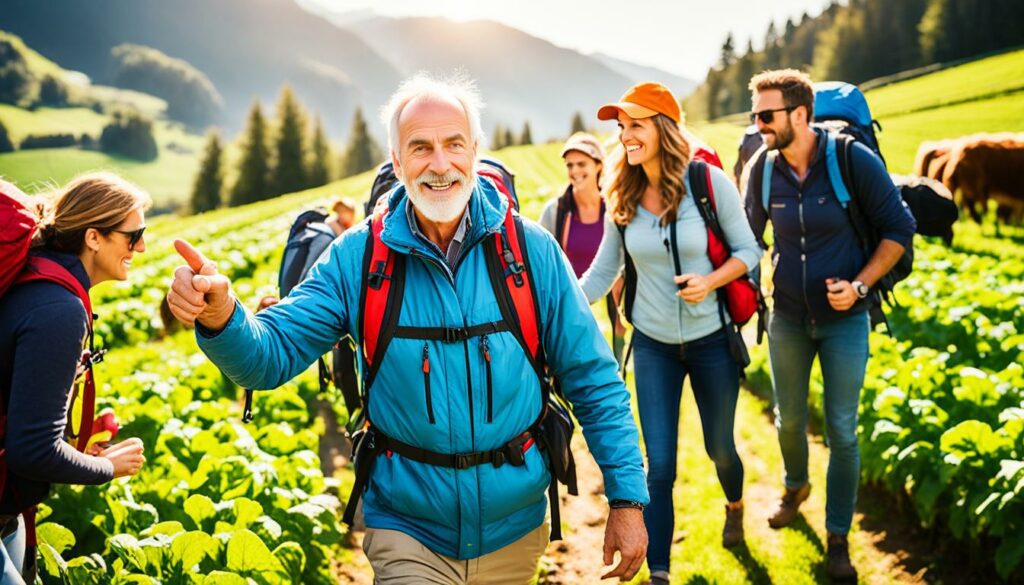
Farms invest in skilled agritourism staff to lead their tours. These guides know everything about the farm and safety rules.
This deep understanding helps them keep visitors safe and avoid dangerous spots. Regular training ensures their knowledge stays up to date.
Safe and educational farm tours are a must. They’re made to teach about farm life while staying safe.
Tours are carefully planned to steer clear of dangers like big machines or sudden animals. They mix learning with fun, using activities and demos to hold visitors’ interest.
It’s seriously important to make sure farms have safe play areas. Many dangers are in farming areas. Kids are often on farms, making it key to keep them safe. This not only helps the young visitors but also builds trust with the farms.
Building safe areas for kids on farms needs a lot of thought. The National Program for Playground Safety says over 50,000 kids get hurt every year on playgrounds. Farms have extra dangers like falls, getting stuck, and heavy equipment.
Play areas should be away from dangerous things and easy for adults to see. They need shade, shelter, and protection from animals. This makes sure kids can play without getting hurt.
Choose the right equipment for the children’s ages. Keep things far apart to avoid accidents. The ground under the play area must be soft for safe landings. Equipment should not have sharp edges or places where kids can get stuck. Also, it must not be made of materials that get too hot.
Watching over kids on farms is vital. They are curious and often don’t realise when they’re in danger. Adults must keep a close eye on them. They should set clear rules and regularly check the play areas for safety.
Parents need to know their kids’ limits. They shouldn’t assume the farm is completely safe for their children. Safety should always come first to avoid accidents.
Over 100 children in the U.S. die, and thousands are badly hurt on farms each year. Making play areas on farms really safe is crucial. It makes farm visits fun and secure for families.
Visitors to the farm often look for ways to interact safely with animals. This requires clear rules to prevent accidents. By setting guidelines for animal contact, we keep everyone safe and make sure they have a good time.
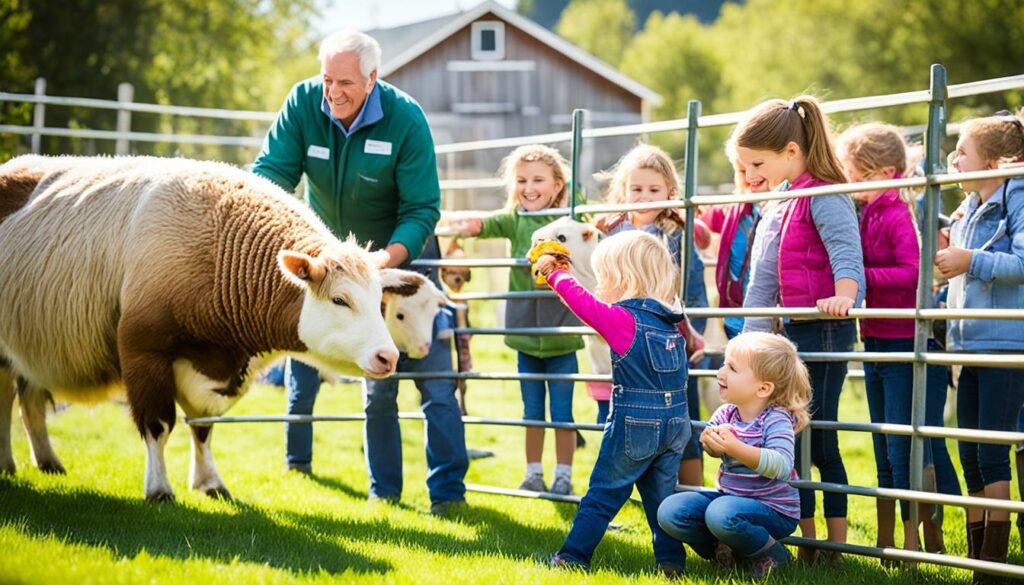
Setting up rules for meeting farm animals is key to keeping everyone safe. People learn the right way to interact with animals. Everyone working on the farm should be qualified to help teach these rules, thanks to programs like CEVAS. Having this training means not only are the workers checked, but the whole farm is too, making sure safety is always top-notch. Plus, everyone who gets this training gains valuable points towards their continued professional development.
Supervising farm animal interactions is crucial for their safety and fun. This is especially important for kids; they must be watched closely when near animals to avoid any trouble. After touching animals, it’s very important to wash your hands with soap and warm water. This is a must, especially for young children, people with weaker immune systems, and pregnant women. To make this easy, there should be places to wash hands set up by the animal viewing areas.
It’s vital to only let healthy animals near people, as some animals can carry diseases. Animals showing symptoms such as diarrhoea shouldn’t be in places where people touch them. By following clear guides from groups like Access to Farms, we make sure visitors and animals stay healthy and happy.
Keeping farms clean is crucial for health. It prevents sickness and makes everyone feel safe. Good hygiene stops diseases from spreading and keeps people well.
Having plenty of hand-washing spots is a must. For every 20 workers, a farm should have a wash area. It should be close, like a 5-minute walk, making it easy to stay clean.
Workers should wash hands with soap for 20 seconds before starting their duties. They should also know about good hygiene, clean work clothes daily, and wear protective gear.
Cleaning and keeping everything germ-free are key on farms. All areas and equipment must be cleaned often. This stops most animal sicknesses.
Clean water areas well to stop bad things like algae. Keeping pests away and managing waste keeps things tidy. Tools must be kept clean to avoid spreading dirt or rust.
“Injuries and illnesses must be documented, with first-aid kits readily available. Educating 100% of staff about proper hygiene practices ensures a farm’s compliance with health standards.”
| Hygiene and Sanitation Measure | Impact on Farm |
|---|---|
| Hand-Washing Stations | Reduces contamination risk |
| Cleaning and Disinfection | Prevents animal diseases |
| Regular Inspections | Maintains equipment cleanliness |
| Pest Control Measures | Reduces infestations |
It’s key to keep farms safe by managing traffic well. Farmers must take steps to keep everyone safe from vehicles.
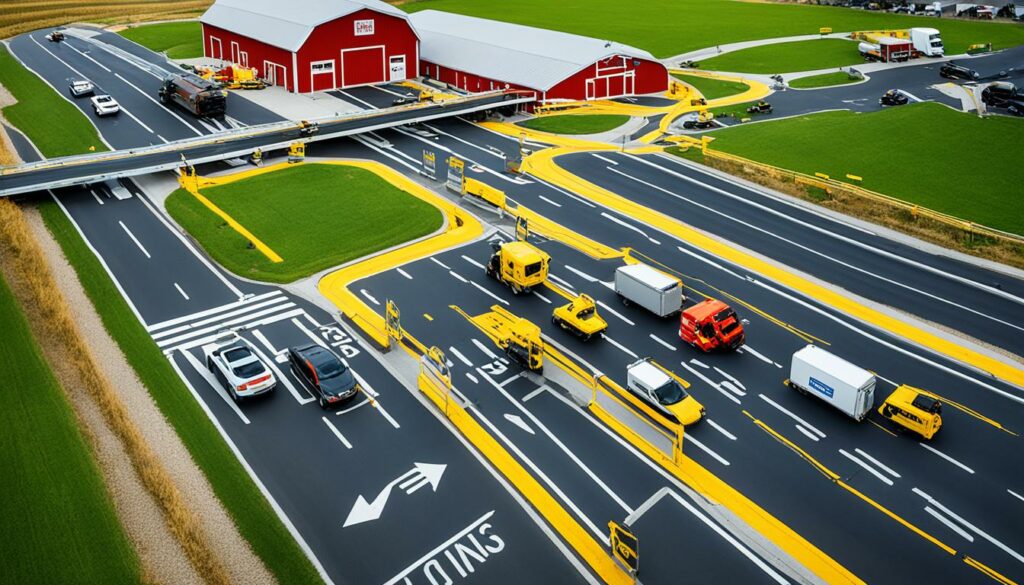
To make sure everyone is safe, farms should have marked areas for vehicles and people. This separates them, reducing the risk of accidents. They also need good entrances, proper drainage, and enough parking. Lighting and signs help, especially in bad weather.
Farmers should have strict rules for traffic to keep things safe. They might make roads one-way, put up mirrors in blind spots, and set speed limits. Checking these rules often helps keep them working well.
| Traffic Control Measure | Implementation Detail |
|---|---|
| One-Way Traffic Systems | Directs vehicles in a single direction to avoid head-on collisions and improve flow. |
| Mirrors at Blind Spots | Increases visibility at critical points to prevent accidents. |
| Speed Restrictions | Limits vehicle speed in high pedestrian areas to reduce collision risk. |
| Parking Provisions | Ensures proper parking spaces are available to minimise vehicle congestion. |
Looking after traffic safety and reducing vehicle risks needs careful planning and checking. These steps make the farm a safer place for everyone.
Keeping food safe on farms is very important. We must follow the Food Safety Modernization Act (FSMA) and its rules, especially the Produce Safety Rule (PSR). These rules help keep people safe when they visit and prevent them from getting sick from the food. Everyone involved in growing, picking, and handling the produce must focus on health and clean practices.
Knowing how to handle food right is key to farm safety. Workers need to learn how to be clean and avoid making food dirty. They should know how to spot diseases, protect wounds, and wear gloves. Dress rules also help keep farms clean and safe for visitors.
Having clean areas to prepare food is crucial. Farms must be cleaned well and often. The FDA says training and encouraging staff to be clean is very important. The PSR also says farms should make sure the areas where food touches are safe, to protect their guests.
Making sure visitor safety on farms is critical. It means keeping visitors safe from vehicles and machines. To do this, it’s key to have barriers and signs. Other important steps include a one-way traffic system, using mirrors in blind spots, keeping speeds down, and not letting vehicles reverse near visitors.
Part of agritourism safety is managing how people interact with animals. This is important to prevent the spread of diseases, especially to kids and pregnant women. Farms should watch over animal contact, make sure there’s a way to wash hands, and manage waste well. These efforts protect visitor health and improve farm visitor welfare.
“The NFU and partnering bodies have established an industry code of practice to guide farms in infection control, with a focus on layout design and hand washing facilities.”
Training and accreditation are also crucial. The CEVAS scheme by LEAF Education helps farm workers know how to keep visitors safe. This scheme checks both the staff and the farm itself, especially for school visits, to make sure visitors are looked after.
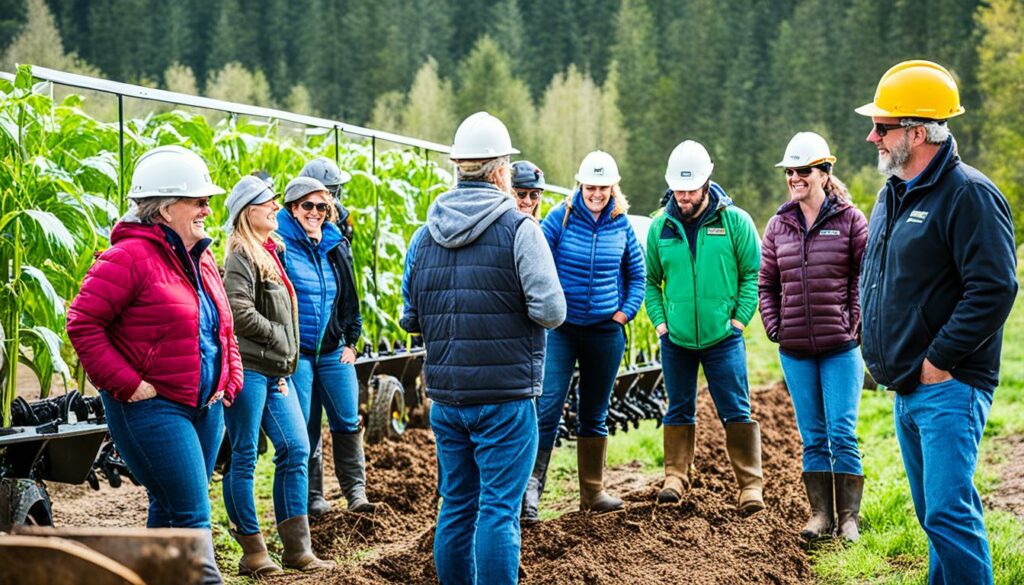
Farms can also use risk checklists from groups like Access to Farms, with support from the NFU. These checklists help farms spot risks and plan how to stay safe.
| Aspect | Best Practice | Benefits |
|---|---|---|
| Vehicle Movement | Segregate visitors and vehicles, install barriers | Reduces accident risks |
| Animal Interaction | Supervise contact, provide hand washing facilities | Minimises disease transmission |
| Staff Training | Implement CEVAS accreditation | Ensures knowledgeable supervision |
Alongside these active steps, it’s crucial to keep checking and staying alert. This helps make sure that farms are always safe and enjoyable for visitors. With help from insurance companies like Rural Mutual Insurance and using tools like LEAF’s risk assessment form, farm owners can tackle safety challenges and create a safe space for everyone.
Agritourism safety is crucial and complex, needing constant care and planning. Shockingly, the U.S. saw 368 farm workers die in 2020, with 18.0 deaths per 100,000 people. For every fatal accident, 100 workers face injuries severe enough to lose work time. This means we need strong safety steps.
Keeping visitors safe starts with looking carefully at the risks around. Common dangers include crashes and tractor accidents, which lead to many deaths. Over 33 kids a day get hurt on farms, showing the need for strict rules, especially near equipment and animals.
Dangers aren’t just physical, though. Farmers often deal with stress, depression, and sometimes turn to drugs. They face many health risks, from handling chemicals to working near machines and animals. Using help from programmes like USDA’s NIFA Farm Safety and CDC’s NIOSH is key to improving safety.
Enhancing safety in agritourism is a broad task. It needs setting up rules, teaching visitors, and promoting a culture of looking out for each other. With the right advice and support, farm owners can make their places safe. This effort, combined with regular checks and following top advice, builds a strong and safe agritourism.
For more on farm safety, check out resources like Rural Health Information Hub.
Looking out for visitor safety on farms is key. It protects guests from dangers and stops accidents. This also guards against legal troubles and financial losses. A safe farm keeps its good name and lets visitors have fun safely.
Farm visits can mean risks with machinery, animals, the ground, and diseases. Knowing these risks and dealing with them helps keep visitors safe.
Doing a risk check means finding areas where visitors might get hurt. This includes machines and animals. Then, make a plan to prevent dangers that has steps, emergency plans, and where to get help if needed.
Barriers and fences stop visitors getting near danger. Signs that are clear help keep kids away from risky places like where tractors are.
An emergency plan needs steps for different dangers, clear signs for emergencies, and how to tell visitors to be safe, especially when doing fun things like hayrides.
Teach visitors before they get there. Send them safety rules on what to wear, use, and how to behave. Also, show them the rules when they arrive with signs and talks around the farm.
Yes, tours with a trained guide make visitors learn more and be safer. Guides show how to stay away from danger areas and follow safety rules.
Make sure play areas are safe and always watched. Check play equipment often. Set clear areas for play and have staff watch out to keep children safe.
Make clear rules for how to be near animals, with someone always watching. This keeps not just visitors safe but also the animals.
Farms need clean hands, clean areas, and to avoid dirt mixing with animals or food. Making sure things are clean keeps visitors and the farm safe.
Keep cars and people apart, don’t let cars reverse where visitors are, set paths for traffic, add mirrors where needed, and make sure cars go slow. This makes the farm safer for everyone.
Follow food safety well and keep places where you prepare food clean. Train staff and follow the rules to make sure food is safe to eat.